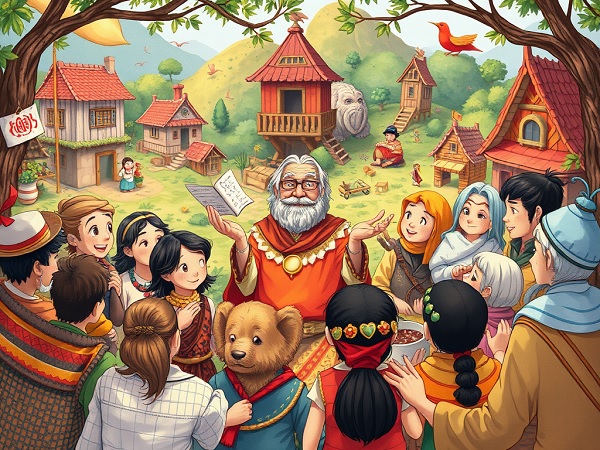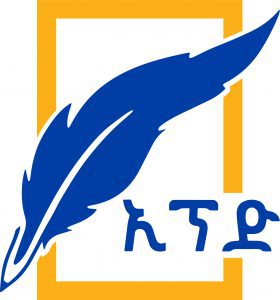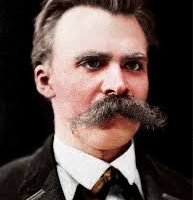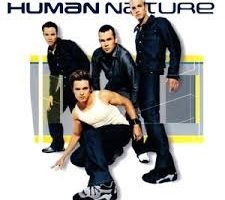
(Part one)
Folk tales constitute a significant aspect of global storytelling traditions, having been passed down orally through generations before eventually being documented in written form. These narratives, rich with fantastical elements such as magic, anthropomorphic animals, heroic quests, and moral lessons, are intricately woven into the cultural fabric of societies around the world. While they are often seen as mere entertainment, folk tales convey profound societal values, wisdom, and the universal human experience.
Folk tales share commonalities across diverse cultures, reflecting the migration and interaction among societies. Similar stories can be identified throughout regions such as Europe, Asia, and Africa but often take on unique local adaptations. This phenomenon has been the focus of folklore scholars like the Brothers Grimm and Antti Aarne. The transmission of these tales has been facilitated by avenues such as trade, conquest, and the oral tradition, allowing them to evolve over time with each retelling while still preserving their essential structural elements.
A pivotal moment in the study of folk narratives occurred in 1928 when Russian scholar Vladimir Propp published his groundbreaking work, “Morphology of the Folktale.” By meticulously analyzing a hundred Russian fairy tales, Propp revealed a common narrative structure that comprises 31 sequential functions—essentially narrative units—and 7 character roles. His structuralist approach demonstrated that despite the vast array of surface variations in folk tales, they share fundamental narrative frameworks that can be systematically categorized.
Propp identified several key character roles that recur throughout folk tales. These include the hero, who embarks on a quest to remedy a deficiency or confront an adversary; the villain, who stands in opposition to the hero; the donor, who provides assistance, often in the form of a magical item or wise counsel; the helper, who aids the hero, usually depicted as a talking animal; the princess or sought-after figure, who typically represents the ultimate reward; the dispatcher, who initiates the hero’s journey; and the false hero, who attempts to pass off their deeds as heroic.
Beyond character roles, Propp outlined 31 specific functions that define crucial plot points within these narratives. The order of these functions is significant, although not every function needs to be present in every tale. Examples of these functions include the absentation, which occurs when a family member leaves; villainy, when the antagonist commits a harmful act; struggle, depicted through the hero’s confrontation with the villain; return, illustrating the hero’s journey back home; and wedding, signifying the union between the hero and the princess. Propp asserted that these functions are invariant—meaning they maintain a consistent sequence regardless of the specific narrative details, whether the antagonist is a dragon or a witch. This notion provides a sort of “grammar” for storytelling, influencing numerous fields such as narratology, semiotics, and even artificial intelligence in story generation.
To illustrate how one might create a folk tale using Propp’s morphology, we can begin by establishing the initial situation, where the hero’s ordinary world is introduced. For example, consider a humble woodcutter living with his daughter, Alina. This is followed by the introduction of conflict or villainy, such as the appearance of a witch who kidnaps Alina, leaving a trail of mysterious black feathers behind. Reluctantly, the hero sets forth on a quest to rescue Alina, despite ominous warnings regarding the witch’s infamous curses.
During his journey, the hero encounters a donor, typically manifested as a helper who provides a magical item. In this case, it could be a wounded fox who gifts the woodcutter a golden flute capable of taming wild beasts. This leads to a climactic struggle where the hero utilizes the flute to defeat the witch, perhaps putting her ferocious wolves to sleep and ultimately rescuing Alina. The tale concludes with the hero’s triumphant return, celebrated by the villagers. It often resolves with a revelation, such as the fox unveiling itself as a cursed prince, thereby alleviating the woodcutter’s poverty.
An illustrative example of this narrative structure can be seen in a folk tale titled “The Golden Flute.” The narrative commences with a humble fisherman residing with his son, Ivan. Soon after, a colossal sea serpent emerges, terrorizing the village by swallowing their boats and disrupting their livelihoods. In response, the village elder dispatches Ivan to appeal for help. This leads to the donor sequence, where he encounters a mermaid who graciously bestows upon him a magical flute that can control the turbulent waves.
In the climactic confrontation, Ivan bravely employs the flute to compel the serpent to release the captured boats, thereby saving the village. The story culminates with Ivan marrying the mermaid and restoring tranquility to the community. This tale exemplifies several of Propp’s narrative functions and character roles, effectively demonstrating how his framework can be employed in constructing folklore.
While Propp’s model has garnered criticism for oversimplifying the rich tapestry of cultural nuances within folk tales and potentially neglecting themes related to gender or class, its impact on the study of narrative structure remains substantial. Contemporary literature, such as J.K. Rowling’s Harry Potter series and George Lucas’s Star Wars, echoes Propp’s narrative structure. In both of these modern stories, we find the classic hero’s journey and the dynamic interplay of character roles that Propp identified. For instance, Harry Potter engages in a quest against the dark forces represented by Voldemort, aligning with the hero-villain dichotomy central to Propp’s model.
Furthermore, studies show that the influence of Propp’s theories extends beyond literature into realms such as film, video games, and even artificial intelligence. In the growing field of computational narratology, AI systems leverage Propp’s functions to generate coherent and compelling narratives, showcasing the relevance of his theories in contemporary storytelling. These AI entities analyze vast datasets of stories, defining and replicating the narrative structures that resonate with human audiences.
Despite the criticisms leveled against Propp’s model, it remains a valuable tool for aspiring writers and storytellers. The skeletal framework he provided allows for not only adherence to classic storytelling norms but also encourages flexibility and creativity within those structures. For example, while a tale may follow a traditional progression of functions, the details—the setting, character development, and cultural context—can be vastly different, allowing writers to insert their unique voices and perspectives.
In crafting folk tales today, storytellers can combine Propp’s morphological aspects with cultural elements specific to their backgrounds. This integration enhances the richness of the narratives, ensuring they resonate on multiple levels and reflect the complex realities of contemporary life. Writers can address modern issues while sticking to the classic frameworks that have historically captivated audiences.
Folk tales are thus much more than whimsical or entertaining stories; they serve as structured reflections of human thought and cultural values, enduring across ages. Propp’s morphology elucidates how these stories are constructed, providing a timeless blueprint for storytelling. By weaving in contemporary themes and character dynamics while respecting Propp’s functions, writers have an opportunity to craft narratives that not only entertain but also impart wisdom, preserving the essence of folklore for future generations.
To conclude, the study of folk tales through Propp’s lens offers us critical insight into the building blocks of storytelling. While acknowledging the importance of cultural context and the variability of themes, his systematic dissection of narrative structure continues to inspire and inform the craft of storytelling today. By understanding these elements, creators can produce stories that not only echo age-old traditions but also illuminate contemporary human experiences, ensuring their reverberation through time, much like the oral traditions that have shaped our collective imagination for centuries.
In summary, whether through the retelling of classic folk tales or the crafting of entirely new narratives, the core principles established by Propp remain crucial. They remind us that, at their heart, stories are a fundamental part of what it means to be human, bridging gaps across cultures, generations, and contexts. Thus, in embracing and adapting these age-old structures, we allow for the continued evolution of folk tales—stories that speak to our shared humanity while highlighting the unique threads that run through each culture, enriching our understanding of life itself.
BY ALEM HAILU G/KRISTOS
THE ETHIOPIAN HERALD FRIDAY 4 APRIL 2025




